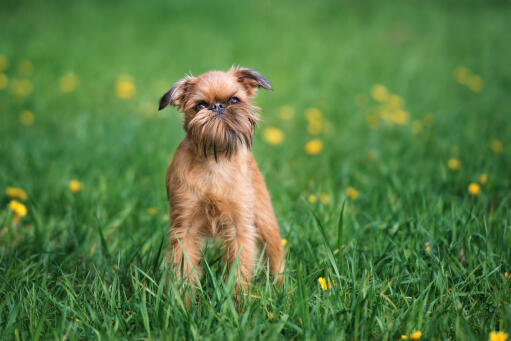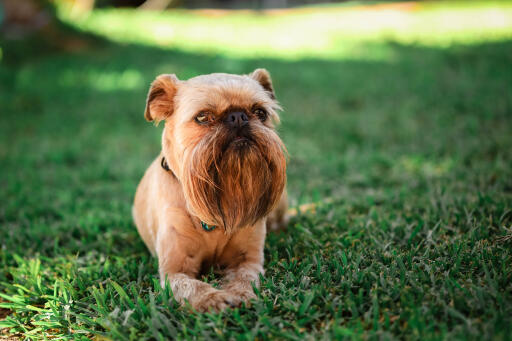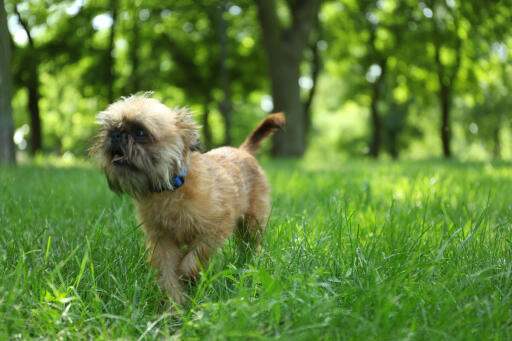Griffon Bruxellois Dogs







History
The Griffon Bruxellois, also known as the Brussels Griffon, originates from the Dutch Smoushond which were used by the locals to help eliminate vermin from houses and farms. In the late 1800’s Pug and Cavalier King Charles Spaniel blood was added to the mix and the breed we know today was born. Since the First World War their numbers kept dropping, and by WWII they were on the brink of dying out. After the war a breeding program began in the UK helping to push their numbers up. They are still classed as quite rare.
Behaviour
These are lively, affectionate and people oriented dogs. They absolutely thrive when with their owners. They are cheerful dogs who will seldom leave your side. They do tend to attach themselves more to one person, but they make for a great family dog as they’ll be fine with children and pretty much any other household pet you may have. This being said, these dogs do not like being teased a lot and may become a bit snappy if pushed too far so perhaps they may not be ideal for families with young children. They will bark if there is someone at the door, but most of the time they then welcome the strangers in with a wagging tail. These are very smart dogs which will need a fair amount of mental stimulation to prevent them from getting bored. Simply playing games like fetch and even just spending time with your dog will fulfill this need of theirs. You will soon find that they love being with you and will be more than happy to cuddle up next to you on the couch. They can get anxious and sad if left alone for extended periods of time.
Due to their smaller size and almost human-like face, many owners spoil their dogs. This can lead to your dog being a fussy eater and may also lead them to believe that they are in charge of the pack. They will need consistent training throughout their lives to prevent “Small Dog Syndrome”. As mentioned before, these are smart dogs with a need to please you. This makes training relatively easy and they will learn new commands quickly. They are sensitive to loud noises and harsh correction, so a more laid back approach to training is needed. Food rewards and positive enforcement will work well. They like to bark, so the “quiet” command should be amongst the first on your list of tricks you want to teach your dog. Early socialization will be needed because, like with many other small dogs, they don’t seem to realize their own size and may become a bit too confident in themselves. They are known for being hard to house train.
These are active and alert dogs which will need some way to let off steam. A short daily walk paired with several play sessions throughout the day is ideal. They don’t need a huge amount of exercise, but they’ll still be more than happy to run around off-leash if given a chance. Their recall is usually good, but if you aren’t fully sure that they’ll listen then it’s best to do this running in a safe/closed area.
Their coat needs brushing a couple of times a week to remove dead hair and stripping 3-4 times a year.
Health Problems
The Griffon can suffer eye related conditions such as scrapes and cataracts. They can sometimes suffer respiratory issues.
Breed Details
- Status: Common
- Life Expectancy: 12 - 14 years
- Weight: 4.5 - 17.5pounds
- Height: 8 - 11"
- Rare: No










